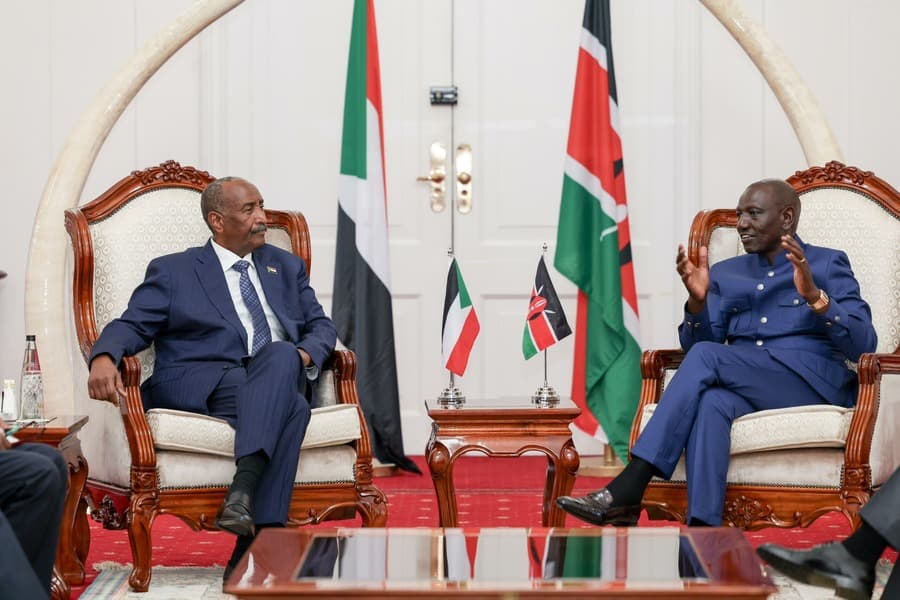Loading News Article...
We're loading the full news article for you. This includes the article content, images, author information, and related articles.
We're loading the full news article for you. This includes the article content, images, author information, and related articles.
An analysis of decades of adopting Western-designed economic and social policies reveals a mixed legacy, prompting urgent calls for homegrown solutions to address Kenya’s unique challenges.

NAIROBI, Thursday, November 20, 2025 (EAT) – For decades, Kenya's development trajectory has been significantly shaped by policies and frameworks conceived in foreign capitals and promoted by international financial institutions. This practice of 'policy importation', often a condition for loans and development aid, has had a profound and contentious impact on everything from public services to the national economy, sparking a critical debate on the necessity of greater policy sovereignty.
The reliance on external blueprints is not merely an academic issue; it carries tangible consequences for Kenyan citizens, influencing healthcare access, educational quality, and the economic pressures on small-scale farmers. This deep-seated pattern warrants a closer examination of its historical roots, sectoral impacts, and the growing momentum towards locally-derived solutions.
The trend of policy importation intensified in the 1980s and 1990s through the Structural Adjustment Programmes (SAPs) championed by the International Monetary Fund (IMF) and the World Bank. Facing economic instability, Kenya, like many African nations, adopted these programmes, which mandated fiscal austerity, trade liberalisation, privatisation of state-owned enterprises, and significant cuts in public spending.
The outcomes of these reforms are widely debated. Proponents argued they were essential for macroeconomic stability. However, numerous analyses link SAPs to increased poverty, income inequality, and the deterioration of social services. The introduction of cost-sharing in health and education, a key component of the reforms, made these essential services unaffordable for many vulnerable households, with studies showing a negative trend in social indicators during the adjustment period.
Agriculture: Reforms aimed at market liberalisation and the withdrawal of state support have yielded mixed results. While some export-oriented sectors like horticulture experienced growth, the broader agricultural sector often suffered, negatively impacting the small-scale farmers who form the backbone of the rural economy. Policies promoting cheap food imports have also been criticized for stifling local production, a concern echoed across West Africa. Furthermore, studies have shown that SAPs had a negative and significant long-run effect on per capita agriculture GDP in Kenya.
Healthcare: The health sector illustrates the challenges of donor dependency. Foreign aid, while crucial for combating diseases like HIV/AIDS, tuberculosis, and malaria, can lead to donor priorities dictating the national health agenda over comprehensive system strengthening. This reliance creates vulnerabilities, as sudden shifts in foreign aid policy can disrupt the supply of essential medicines and threaten decades of progress. Concerns have been raised that aid can be used as a tool to coerce recipient nations into adopting policies that may conflict with local values or laws.
Privatisation: The push to privatise state-owned enterprises was a central tenet of the SAPs, intended to increase efficiency and reduce the fiscal burden on the government. While some studies indicate that privatisation improved the profitability and financial efficiency of certain commercial state corporations, the overall results have been mixed. The initial phases of privatisation had limited economic impact as many privatised entities were small, while larger, strategic companies were not sold.
In response to the shortcomings of imported models, a continental movement advocating for 'homegrown solutions' and greater policy sovereignty is gaining traction. This approach emphasizes the need for context-specific, evidence-based policies developed with local participation.
Rwanda is often cited as a successful example, having implemented culturally rooted initiatives like the 'Gacaca' community justice system and the 'Girinka' (one cow per poor family) programme, which have contributed to poverty reduction and social cohesion. These successes have inspired a broader push for African solutions to African problems, a vision encapsulated in the African Union's Agenda 2063, which prioritizes development driven by the continent's own citizens and strategic frameworks.
In Kenya, the establishment of institutions like the Kenya Institute for Public Policy Research and Analysis (KIPPRA) was intended to provide the government with quality policy advice based on objective local research. The country's own development blueprint, Vision 2030, was developed through an inclusive stakeholder process, aiming to transform Kenya into a middle-income country by fostering economic, social, and political development based on local aspirations.
The debate is not about rejecting all external ideas, but about ending the uncritical 'cut-and-paste' approach. For Kenya, the way forward requires strengthening its capacity for independent policy analysis and implementation. This involves robustly funding research institutions, fostering genuine public participation, and critically evaluating every policy for its suitability to the Kenyan context. As the nation navigates its development path, the central challenge remains: to craft and implement policies that are not just imported blueprints, but are truly made in Kenya, for Kenyans.